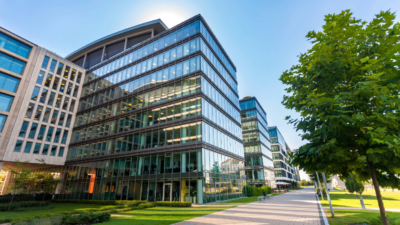The healthcare sector has experienced tremendous growth the last 20 years. From technological advancements to evolving patient needs, the industry continually adapts to meet the demands of modern healthcare. However, one significant challenge looms large amidst this evolution: aging facilities. These structures, once at the forefront of care provision, now present obstacles to delivering modern, efficient healthcare services.
Health systems that find themselves saddled with antiquated buildings needing reinvestment have a decision to make – stay or go?
New Healthcare Delivery Models
In response to the challenges posed by aging facilities, healthcare providers are embracing innovative delivery models. Telemedicine, for instance, continues to grow in popularity, offering patients convenient access to care from the comfort of their homes. This shift towards digital health services not only improves patient accessibility, it also necessitates a reevaluation of traditional healthcare facility designs in order to accommodate technology and new service lines.
Health hubs have also emerged as “a promising model for health and social care coordination”, per ASPE. By bringing together various healthcare services under one roof, health hubs streamline care delivery and enhance collaboration among providers. Additionally, medical office and outpatient facilities continually gain traction, offering patients a more convenient alternative to traditional hospital settings.
How Healthcare Spaces Have Changed as a Result
This evolution in healthcare delivery has resulted in a corresponding transformation in healthcare spaces. Waiting rooms are transitioning towards the self-rooming model, reducing patient wait times and enhancing efficiency, and the design of exam rooms is being reimagined to accommodate new technologies and equipment.
The integration of various services under one roof, such as lab and radiology, further streamlines the care continuum, enhancing convenience for patients. The abundance of private office space in older healthcare buildings is no longer the operational reality for many health providers. Collaborative environments are becoming increasingly important for fostering interdisciplinary teamwork and improving patient outcomes.
What This Means for Healthcare Tenants
For healthcare tenants, the antiquation of healthcare facilities presents both challenges and opportunities. Relocating from aging infrastructure to better serve patient populations requires careful consideration of patient origin mapping and demographic analysis.
For tenants with expiring lease terms, they must weigh the decision to recommit or look at alternative properties that may offer a better location or are newly renovated. In many cases, the capital required to renovate or reinvigorate an outdated building is the same, or more, as relocating. That conversation should start two to three years prior to the lease’s expiration to ensure a seamless transition to the new site.
However, there are opportunities for health systems and the real estate community to reposition and renovate existing facilities, revitalizing outdated infrastructure to meet modern healthcare needs. Decision-making regarding building reinvestment or relocation necessitates thorough evaluation and strategic planning to ensure optimal outcomes for both patients and healthcare organizations.
Extracting Real Estate Opportunities
To proactively navigate the real estate market, healthcare systems must adopt a strategic approach. At Colliers, we play a crucial role in assisting health systems with identifying optimal properties that align with their goals and objectives. Early engagement in the real estate decision-making process is essential to avoid rushed lease renewals and to ensure that healthcare organizations secure facilities that support their long-term vision. As the healthcare industry continues to evolve, so too must the infrastructure which supports it. By embracing new delivery models and adapting their facilities accordingly, healthcare tenants can ensure that they remain responsive to the needs of patients. Through strategic planning and collaboration with the real estate community, healthcare organizations can navigate the challenges posed by aging facilities and extract opportunities for growth and innovation.

 Maureen Goetz
Maureen Goetz

 Marc Shandler
Marc Shandler Josh Cramer
Josh Cramer
 Shawn Janus
Shawn Janus